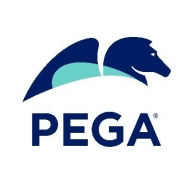

Pega Platform and WebRatio compete in the business process management and application development space. Pega Platform holds an edge for comprehensive execution and variety of functionalities, while WebRatio is appealing for its simplicity and faster development times.
Features: Pega Platform offers intuitive automation features, robust analytics, and adaptability to various industries. WebRatio is known for rapid development capabilities, ease of integration with existing systems, and a model-driven approach.
Ease of Deployment and Customer Service: Pega Platform provides extensive deployment options and strong customer support, which could involve a learning curve. WebRatio offers a straightforward deployment model and responsive service, suited for businesses seeking speed and simplicity.
Pricing and ROI: Pega Platform typically involves higher setup costs, aiming for improved efficiency and ROI over time. WebRatio offers a cost-effective approach with quick ROI, appealing to cost-sensitive decision-makers.
| Product | Market Share (%) |
|---|---|
| Pega Platform | 5.2% |
| WebRatio | 0.3% |
| Other | 94.5% |

| Company Size | Count |
|---|---|
| Small Business | 9 |
| Midsize Enterprise | 15 |
| Large Enterprise | 68 |
Pega Platform facilitates business process management, case management, and workflow automation for industries like banking, insurance, and healthcare. It supports digital transformation and customer service enhancements with its low-code capabilities and seamless integrations.
Pega Platform enables users to create efficient systems for case management, financial operations, and digital transformations. It provides tools for client onboarding, quoting, claims processing, customer experience improvements, and content management. Pega's low-code approach allows for the automation of complex processes, making it suitable for enterprises looking for adaptability and rapid deployment. While it offers strong real-time analytics and decision automation, users acknowledge challenges in user interface, integration, and performance aspects. High costs and a learning curve need attention, and enhancements in AI features and cloud services are desired.
What are the key features of Pega Platform?In banking, Pega Platform automates loan processing, accelerates customer onboarding, and manages compliance. Insurance companies benefit from streamlined claims processing and policy management. Healthcare sectors use the platform for patient engagement and care coordination, enabling organizations to adapt quickly to changing industry requirements.
We monitor all Business Process Management (BPM) reviews to prevent fraudulent reviews and keep review quality high. We do not post reviews by company employees or direct competitors. We validate each review for authenticity via cross-reference with LinkedIn, and personal follow-up with the reviewer when necessary.